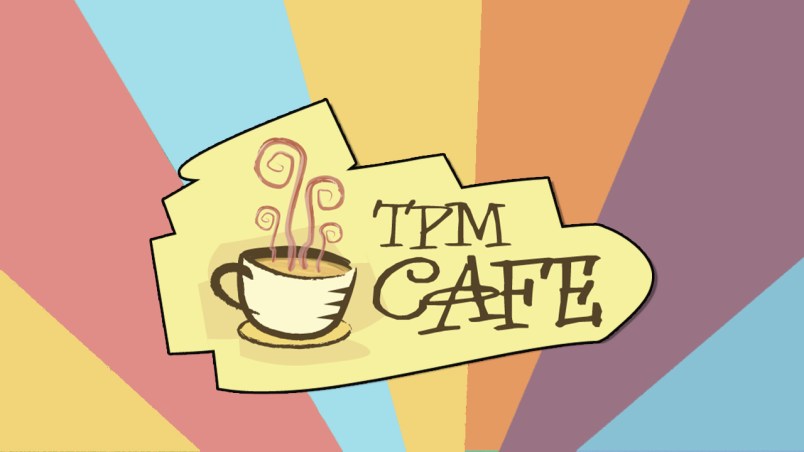While TPM today is one site at one url, it was once a constellation of sites — TPMMuckraker, TPMDC, TPMtv and TPMCafe.
The last of those four lives on as TPM’s present-day section for opinion writing and contributors. But it got its start as a robust entity of its own, separate from TPM, during a particularly online moment in the late 2000s.
Social media was in its nascent stages, and there was a higher barrier to entry for a would-be commentator looking to cultivate an audience on the web. “In those days, you couldn’t just start a Twitter account and suddenly you’re talking to as many people as you could find to listen to you,” Josh explains in the video above. “These outlets didn’t exist.”
And so TPM Cafe took form: a series of group blogs, shifting in form and number of contributors. At various points there was a book club, a labor politics blog, and a foreign affairs blog. There was the Coffee House, a section for Cafe’s “regulars,” which Josh describes as “a bunch of smart, famous people talking.”
Cafe’s most well-remembered blogger today may be the now-senator, then-professor Elizabeth Warren, who, along with colleagues and her students, wrote at Cafe about social security and financial pressures on America’s middle class from 2005 through 2008.
But the list of high-profile people who contributed to Cafe is far more extensive than that. It includes John Kerry, as well as Sens. Sherrod Brown and Bernie Sanders, both of whom were representatives at the time. Big names in journalism today including Ezra Klein, Dahlia Lithwick, Paul Krugman, George Packer, Ed Kilgore, Glenn Greenwald, Jonathan Chait, Peter Beinart and Emily Bazelon all wrote. Prolific blogger Matthew Yglesias once helmed a Cafe vertical offering “reality-based commentary.” The late programmer and activist Aaron Swartz authored a few posts, as did authors Anne Lamott and Jonathan Franzen.
Over time, these experts got their own homes for issuing their opinions — some at prestigious, legacy publications, others at startup rivals to TPM, some in the halls of Congress, and, most, on Twitter. A slimmed-down version of Cafe was eventually rolled into TPM proper. Today, the former Cafe is largely only accessible through the internet archive. But the memory of the original Cafe will live on as a foundational experiment in the early days of digital media.



 ANNIVERSARY MAIN PAGE
ANNIVERSARY MAIN PAGE